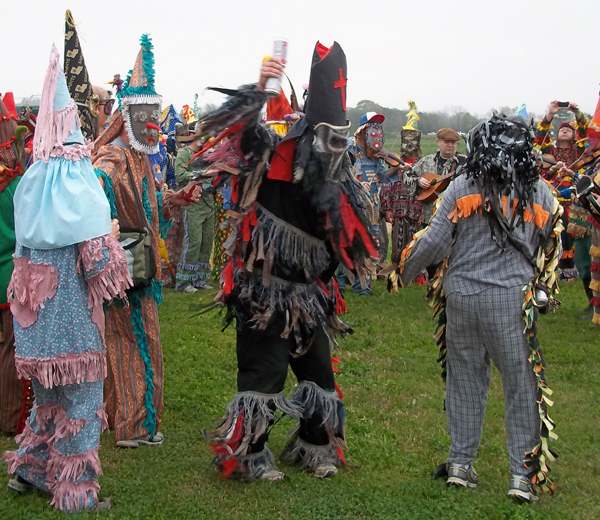Paris, the most visited
city in the world, covers 40 square miles of land and is home to 11.5 million
people. So, of course, on a recent weekend trip there with my friends, we tried
to see it all. Though we missed a few sites (most notably, going into the
Louvre to see the Mona Lisa), we made up for it with the miles we covered on
foot and bicycle.
Parisian eco-friendly transport is impressive.
Electric car charging stations were scattered around the city and the bicycle
rental system was fantastic! For 1.30 Euro you are extended credit for 24
hours. The first half hour is free after which the rental cost is 1 Euro per
hour. The extensive network of bike lanes and bike stations make it a super cheap,
easy way to see, or get lost in, Paris. [velib.paris.fr] Figure it out and ride
to Eiffel Tower. The roundabouts on the bicycles during rush hour were somewhat
harrowing for the inexperienced. We circled the big roundabout near the
Bastille at least six times before exiting onto the correct road.
The Pigalle neighborhood, though described as a seedy sex district in
one guidebook, was a convenient and affordable place to stay. Our hotel was about
a block from Moulin Rouge in the Pigalle neighborhood. It was more campy than the
seedy sex district as described in a guide book and at night Parisian hipsters
packed the nearby bars.
French people have an
unfair reputation as being unfriendly and disdainful. Though our exposure was
limited, we asked A LOT of directions, with “Bonjour” being the most of our
French, yet everyone we met was super nice and helpful.
The Free Walking Tour
was perfect. Especially after spending the first day and a half trying to
navigate Parisian maps and apply the directions of well-meaning strangers (French
words sound very different to an untrained ear than they appear on maps). Our guide,
Phillipe, was full of jokes at the expense of everyone (mostly the British),
shared local anecdotes like those of Dirty Bertie’s excesses in the city, and
offered tips on skipping lines at the busiest museums.
Parisian sites are
everywhere and as beautiful as imagined. I do wish we'd known that listed
closing times exclude the fact that last entry is an hour earlier. As a result,
we missed seeing the Catacombs and the Cemetery of Pere Lachaise. The Catacombs
were in use from 1786 to 1814 when Parisian cemeteries were closed due to
hygiene and are home to the remains of 6 million Parisians.
Sainte Chapelle, accessed through the Palais de Justice , was
built 1245-8. It is known for its stained glass windows fifty feet high
depicting 1,134 biblical scenes were something else all together.
Jardin du Luxembourg is the second largest public garden in Paris and covers more than 55 acres. It was began by Marie de Medicis, regent for King Louis XIII, in 1611 who wanted a garden like those in her native city of Florence.
Jardin des Tuileries (1666), where it meets the Place de la Concorde
(1754) and looks down the Avenue des Champs-Elysees toward the Arc de Triomphe
and the Eiffel Tower. In the middle stands an Egyptian pillar from Luxor.
Referred to by our Parisian guide as a gift the Egyptians have periodically
asked to be returned, the same pillar was described by our Egyptian guide in
Luxor as having been gifted in exchange for a large clock installation. The
clock in Luxor broke after less than a year, whereas the Egyptian pillar still
stands.
Palais-Royal was once home to Cardinal Richelieu and the
dukes of Orlean. It now houses the Council of State, the Council of the Constitution,
and the Ministry of Culture.
Construction began on Notre Dame, the super famous Gothic cathedral, 1163 and lasted until the 1240s. It was restored after being badly damaged during the French Revolution and upkeep is ongoing to keep it in working order. When we visited there was a crowd watching a discussion near the altar and plenty of priests.
Champs Elysees and
The
McDonald’s (I know, terrible, but I didn’t buy any food!) in Paris even had a
Coke Lite fountain sodas! I’ve
been craving one for the past 18 months!
The July Column topped
by the Genie de la Liberte, at center, honors the victims of the revolution
of July 27-29th, 1830. The square became a symbol of the French Revolution
after the 1789 storming of the Bastille.
Stairs in Montmartre and Sacre Couer was built in the 1870s to atone for the general
hedonism of the era. Some believe it to be the source of the country’s
geopolitical misfortunes; nevertheless, it has a fantastic view of the city.
Versailles, the center of French royal power from 1682 until the French Revolution of the 1790s, has more than 700 rooms and 1,250 fireplaces. When construction was complete on the initial building phase (which took 50 years), the palace could accommodate 5,000 people.
The flea market of Le
Marche aux Puces de St-Ouen de Clignancourt has more than 250 vendors with everything from modern cookware to old perfume decanters. It is part of the flea market complex on the city's northern side with over 2,500 open stalls.



















![See in fullscreen [Press F11] Fullscreen](http://btemplates.googlepages.com/fullscreen.gif)










